The 10 Most Famous UNESCO World Heritage Sites
UNESCO World Heritage Sites are some of the most remarkable and historically significant places on Earth. These sites are recognized by the United Nations Educational, Scientific, and Cultural Organization (UNESCO) for their cultural, historical, or natural significance. With over 1,100 sites worldwide, it can be not easy to decide which ones to visit. In this article, we will explore the ten most famous UNESCO World Heritage Sites.

This post may contain affiliate links. Please read our disclosure and privacy policy for more information.
From the Great Wall of China to the Taj Mahal, these sites are not only stunningly beautiful, but they also offer a glimpse into the rich history and culture of the countries where they are located. Each site has its unique story to tell, and visiting them can be a life-changing experience. Whether you are a history buff, a nature lover, or simply looking for an unforgettable travel experience, these sites should be at the top of your list.
Understanding UNESCO World Heritage Sites
UNESCO World Heritage Sites are cultural or natural landmarks that are considered to be of outstanding universal value and are protected by international treaties. These sites are chosen based on their significance, authenticity, and integrity and are recognized as belonging to all the world’s peoples, irrespective of the territory on which they are located.
There are over 1,100 UNESCO World Heritage Sites in 167 countries, including many natural and cultural wonders. The most famous sites include the Great Wall of China, the Taj Mahal, and the Grand Canyon.
To be considered for the UNESCO World Heritage List, a site must meet one or more of the following criteria:
- It represents a masterpiece of human creative genius.
- It exhibits an important interchange of human values over time or within a cultural area of the world on developments in architecture, monumental arts, town planning, or landscape design.
- It bears a unique or at least exceptional testimony to a cultural tradition or to a civilization that is living or which has disappeared.
- It is an outstanding example of a type of building, architectural or technological ensemble, or landscape that illustrates a significant stage in human history.
- It is an outstanding example of a traditional human settlement, land use, or sea use, which is representative of a culture (or cultures) or human interaction with the environment, especially when it has become vulnerable to irreversible change.
- It is directly or tangibly associated with events or living traditions, with ideas, or with beliefs, with artistic and literary works of outstanding universal significance.
UNESCO World Heritage Sites are not only crucial for their cultural and historical significance but also for their economic and social benefits. They attract millions of visitors annually, generating revenue and creating jobs in the tourism industry. Additionally, they help to promote international understanding and cooperation, as well as to preserve our shared cultural and natural heritage for future generations.
The Pyramids of Egypt
The Pyramids of Egypt are among the most famous UNESCO World Heritage Sites. Located in Giza, just outside of Cairo, the Pyramids are a testament to the engineering and architectural skills of the ancient Egyptians. The Pyramids were built as tombs for the pharaohs and their consorts during the Old and Middle Kingdom periods of Ancient Egypt.

The Great Pyramid of Giza is the largest of the three pyramids and is the only remaining wonder of the ancient world. It was built for the Pharaoh Khufu and is estimated to have taken over 20 years to construct, using the labor of over 100,000 workers. The Pyramid of Khafre and the Pyramid of Menkaure are also located in Giza and are slightly smaller than the Great Pyramid.
Visitors to the Pyramids can explore the interior of the pyramids, which includes the burial chambers and passages used to transport the pharaoh’s body to the afterlife. Other ancient structures, including the Sphinx, a statue of a mythical creature with the head of a human and the body of a lion, also surround the Pyramids.
The Pyramids of Egypt are not only a symbol of Ancient Egypt but also of human history and achievement. They continue to fascinate and inspire people from all over the world, and their legacy will undoubtedly endure for many centuries to come.
The Great Wall of China
The Great Wall of China is one of the most famous UNESCO World Heritage Sites in the world. It is an ancient series of walls and fortifications that were built to protect the northern borders of China from invading forces. The Great Wall was continuously built from the 3rd century BC to the 17th century AD, with a total length of more than 20,000 kilometers.

The Great Wall of China was built by successive Chinese empires, including the Qin, Han, and Ming dynasties. The wall used various materials, including brick, tamped Earth, and stone. The construction of the wall was a massive undertaking that involved millions of workers over many centuries.
The Great Wall of China is not a single, continuous wall but rather a series of walls, towers, and fortifications that were built along the northern borders of China. The wall was built to protect China from the nomadic tribes in the north, including the Mongols and the Manchus.
Today, the Great Wall of China is one of the most popular tourist attractions in the world. Visitors can explore different wall sections, including the most famous section in Badaling, located just outside of Beijing. The Great Wall of China is a testament to the ingenuity and determination of the Chinese people, and it remains an important symbol of Chinese culture and history.
The Taj Mahal, India
The Taj Mahal is a mausoleum complex in the Agra District in Uttar Pradesh, India. It was built by the Mughal emperor Shah Jahan in the 17th century in memory of his beloved wife, Mumtaz Mahal, who died during childbirth. The complex covers nearly 17 hectares and is situated on the right bank of the Yamuna River in a vast Mughal garden.
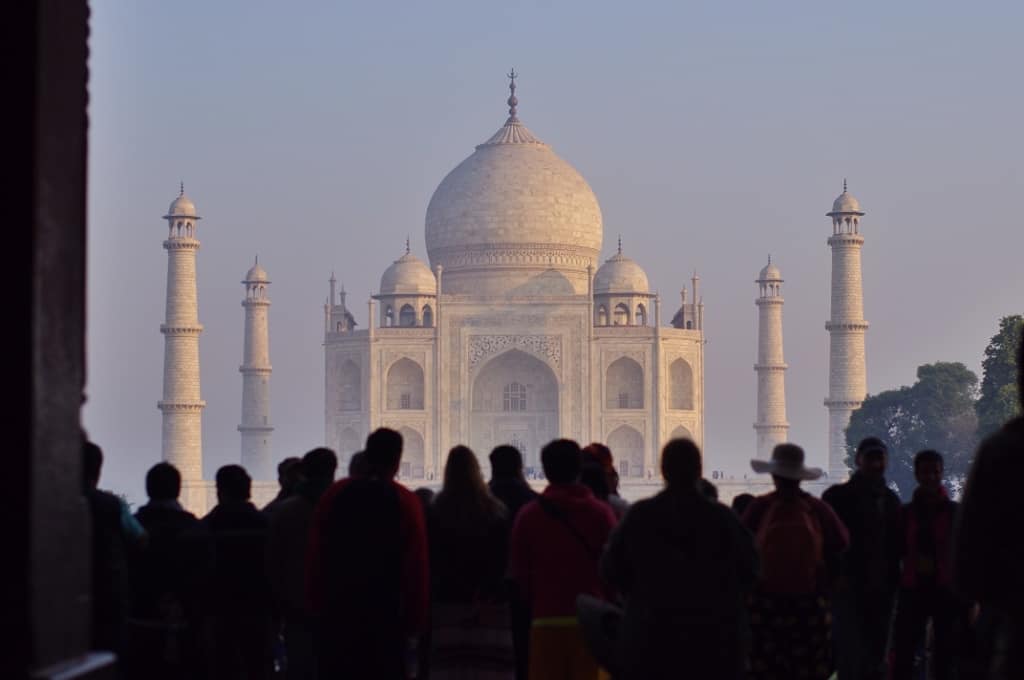
The Taj Mahal is widely considered one of the most beautiful buildings ever created and is a UNESCO World Heritage Site. It is a stunning example of Mughal architecture, which combines elements from Islamic, Persian, Ottoman Turkish, and Indian architectural styles. The complex is made of ivory-white marble and features intricate carvings, inlaid precious stones, and calligraphy.
The main building of the complex is the tomb of Mumtaz Mahal, which is surrounded by four minarets. The tomb of Shah Jahan himself was also added to the complex later. The interior of the Taj Mahal is equally impressive, with intricate designs and patterns covering the walls and ceilings.
Visitors to the Taj Mahal can also explore the surrounding gardens, which include reflecting pools and fountains. The complex is open to visitors every day except for Fridays, and it is recommended to visit early in the morning or late in the afternoon to avoid crowds and the heat of the day.
Overall, the Taj Mahal is a must-visit destination for anyone interested in history, architecture, or beauty. Its stunning design and intricate details make it a true masterpiece of human creativity and a testament to the enduring power of love.
Machu Picchu, Peru
Machu Picchu is a 15th-century Inca citadel in the Cusco Region of Peru, South America. It was built in the classical Inca style, with polished dry-stone walls. The citadel is situated on a mountain ridge above the Sacred Valley, 80 kilometers northwest of Cusco, through which the Urubamba River flows. Machu Picchu was declared a UNESCO World Heritage Site in 1983 and was named one of the New Seven Wonders of the World in 2007.
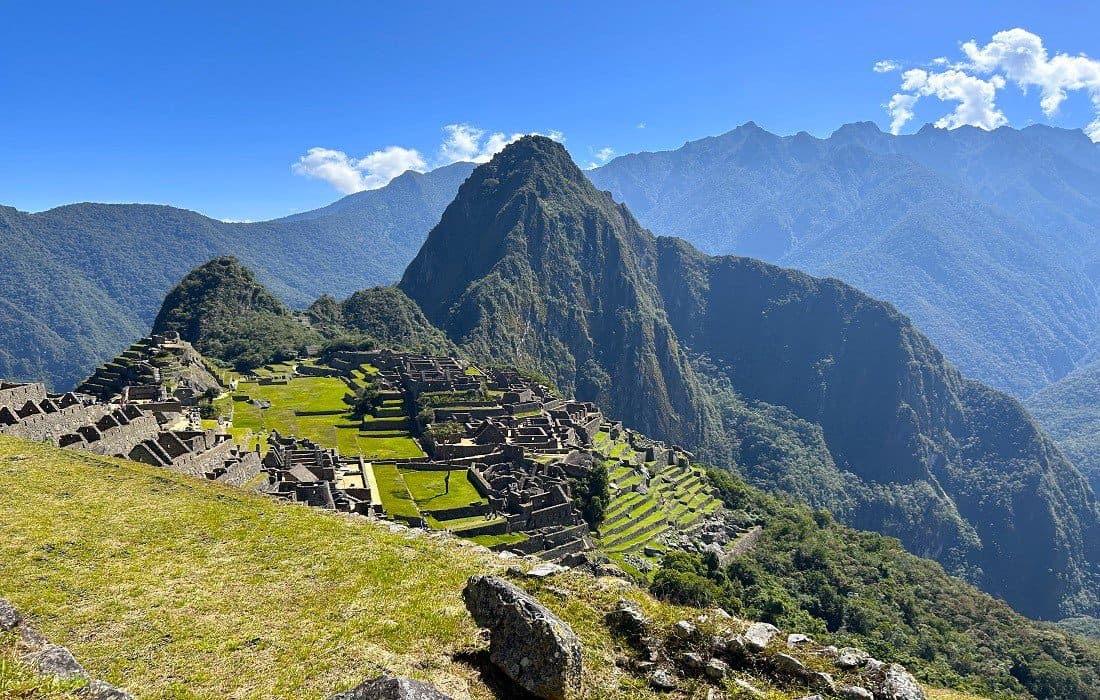
The site is divided into two main areas: the agricultural terraces and the urban sector. The agricultural terraces, which are located on the southern side, were used to grow crops such as maize, potatoes, and coca. The urban sector is situated on the northern side and consists of plazas, temples, and palaces. The most notable structures in the urban sector are the Temple of the Sun, the Intihuatana, and the Temple of the Three Windows.
Machu Picchu is a popular tourist destination and attracts visitors from all over the world. The site is accessible by train or hiking the Inca Trail, a 4-day trek through the Andes Mountains. Visitors must purchase a permit to enter the site and are limited to a maximum of four hours inside the citadel. The Peruvian government has implemented measures to restrict the number of visitors to the site to preserve its fragile ecosystem.
The Colosseum, Italy
The Colosseum, the Flavian Amphitheatre, is an iconic symbol of Rome and one of the most famous UNESCO World Heritage Sites. It was built in AD 70-80 and is located in the city’s heart. The Colosseum was the largest amphitheater ever built and could hold up to 80,000 spectators.

The Colosseum was used for gladiatorial contests and public spectacles such as animal hunts, mock sea battles, and executions. The building was designed to be easily accessible and had 80 entrances, allowing spectators to enter and exit quickly. The Colosseum was also intended to impress visitors with its grandeur and engineering feats.
Today, the Colosseum is a popular tourist attraction and a symbol of ancient Roman civilization. Visitors can tour the Colosseum and learn about its history and architecture. The Colosseum has undergone extensive restoration over the years, and visitors can see the impressive engineering feats that went into building this iconic structure.
Overall, the Colosseum is a must-see UNESCO World Heritage Site for anyone interested in ancient Roman history and architecture.
Stonehenge
One of the most famous prehistoric monuments in the world is Stonehenge, located in Wiltshire, England. Built over 4,000 years ago, it consists of a ring of standing stones, each weighing up to 25 tons. The purpose of Stonehenge is still a mystery, although many theories suggest it was used for astronomical observations, religious ceremonies, or as a burial ground.

The Acropolis, Greece
The Acropolis of Athens is a UNESCO World Heritage Site and is one of the most famous ancient archaeological sites in the world. It is located on a rocky outcrop above the city of Athens, Greece, and contains the remains of several old buildings of great architectural and historical significance.
The Acropolis has been inhabited since prehistoric times and has undergone several transformations over the centuries. The most famous buildings on the Acropolis were constructed in the 5th century BC during the “golden age” of Athens and under the stewardship of Athenian statesman Pericles. These buildings include the Parthenon, the Erechtheion, the Propylaea, and the Temple of Athena Nike.
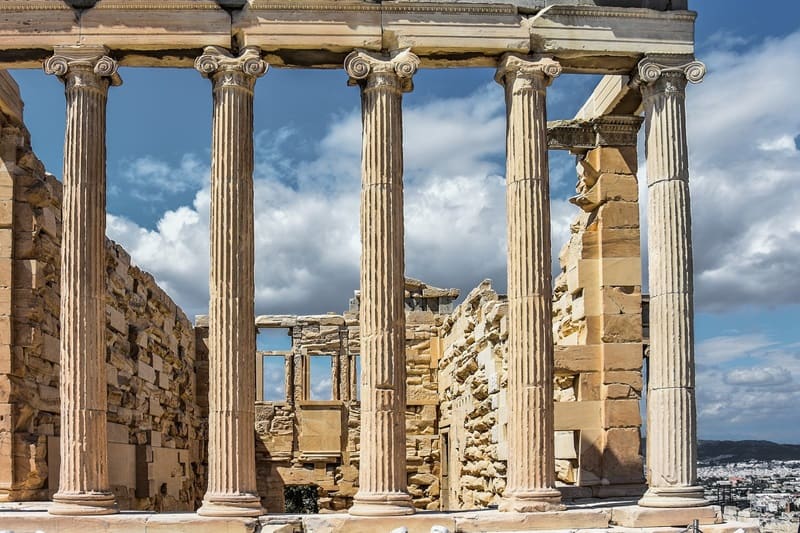
The Parthenon is the most famous building on the Acropolis and is considered one of the most outstanding examples of classical Greek architecture. It was built between 447 and 432 BC and was dedicated to the goddess Athena, the patron deity of Athens. The Parthenon was used as a temple until the 6th century AD, when it was converted into a Christian church.
The Erechtheion is another famous building on the Acropolis and was built between 421 and 406 BC. It was dedicated to Athena and Poseidon and is known for its unique architecture, including the Caryatids, which are six female figures that serve as columns.
The Propylaea is the monumental gateway to the Acropolis and was built between 437 and 432 BC. It was designed by the architect Mnesicles and is considered one of the finest examples of classical Greek architecture.
The Temple of Athena Nike is a small temple built between 427 and 424 BC. It was dedicated to the goddess Athena Nike and is known for its beautiful frieze, which depicts the Battle of Plataea.
Overall, the Acropolis of Athens is an important historical and cultural site that represents the pinnacle of ancient Greek civilization. Its architectural and artistic achievements have influenced Western culture for centuries and continue to inspire visitors from all over the world.
Angkor Wat, Cambodia
Angkor Wat is one of the most famous UNESCO World Heritage Sites in the world. It is located in the northern province of Siem Reap, Cambodia. The temple complex is one of the most significant religious monuments in the world, covering an area of approximately 400 square kilometers.
Built in the 12th century, Angkor Wat was originally a Hindu temple dedicated to the god Vishnu. Later, it was transformed into a Buddhist temple. The temple’s architecture blends Hindu and Buddhist styles, featuring intricate carvings and stunning bas-reliefs.

The temple is surrounded by a moat and is accessed via a causeway. Four smaller temples and several galleries surround the central temple. The main tower rises to a height of 65 meters and is the most iconic feature of the temple.
Visitors to Angkor Wat can explore the temple complex and learn about its history and significance. The temple is particularly popular at sunrise and sunset when the light creates a stunning effect on the temple’s architecture.
Angkor Wat is an important cultural and historical site, and its preservation is crucial for future generations. The site is also a significant tourist attraction, bringing visitors from all over the world to Cambodia.
The Historic Areas of Istanbul, Turkey
The Historic Areas of Istanbul are a group of sites located in the capital district of Fatih in Istanbul, Turkey. These areas were added to the UNESCO World Heritage List in 1985. The historic areas of Istanbul include the key attributes that convey the Outstanding Universal Value of Istanbul as the parts of the city that had escaped significant changes and deterioration in the 19th and 20th centuries and were already protected by national legislation at the time of inscription.
Some of the most notable sites in the Historic Areas of Istanbul include the Topkapı Palace, the Hagia Sophia, the Sultan Ahmed Mosque (also known as the Blue Mosque), the Hagia Irene, Zeyrek Mosque, Süleymaniye Mosque, Little Hagia Sophia, and the Walls of Constantinople. These sites are significant not only for their architectural and historical value but also for their cultural and religious significance.
Sultan Ahmed Mosque – The Blue Mosque
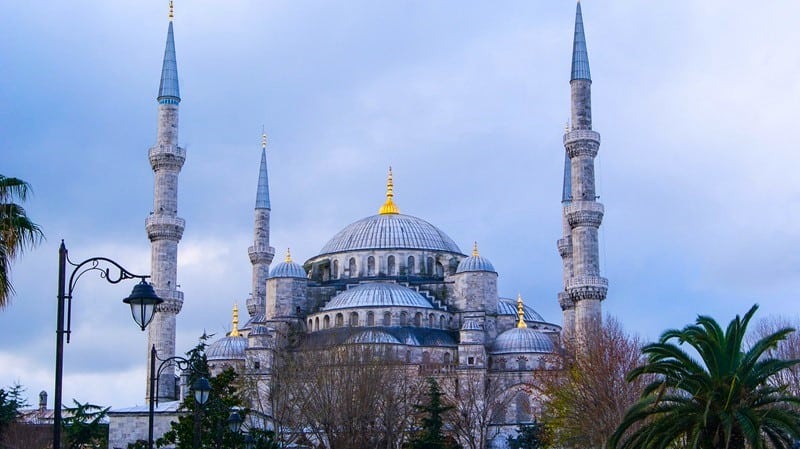
Visitors to Istanbul can explore these historic areas on guided tours and admire the stunning architecture and intricate details of these sites. The Topkapı Palace, for example, was the primary residence of the Ottoman sultans for nearly 400 years and features a vast collection of artifacts and treasures from the Ottoman Empire. The Hagia Sophia, on the other hand, was a church, then a mosque, and now a museum, showcasing the unique blend of Byzantine and Ottoman architecture.
The Historic Areas of Istanbul offer visitors a glimpse into the rich history and culture of Turkey. It is a must-see for anyone interested in architecture, history, and culture.
Grand Canyon
The Grand Canyon is a steep-sided canyon located in Arizona, United States. The Colorado River carves it, and is over 277 miles long. The Grand Canyon is one of the most popular natural heritage sites in the world, attracting millions of visitors every year. It is known for its stunning views, unique geology, and diverse wildlife. The Grand Canyon is a UNESCO World Heritage Site and is considered one of the Seven Natural Wonders of the World.

Everglades National Park
Everglades National Park is a UNESCO World Heritage Site in Florida, USA. It is the largest tropical wilderness in the United States. And is home to a diverse range of plant and animal species. Unfortunately, the park faces several challenges, including habitat loss, invasive species, and climate change. The park’s delicate ecosystem is threatened, and urgent action is needed to protect it for future generations.

Rainforests of the Atsinanana
The Rainforests of the Atsinanana are a group of six national parks in Madagascar. They are home to various endemic species, including lemurs, birds, and reptiles. Unfortunately, the rainforests are threatened by deforestation, illegal logging, and mining. The government of Madagascar has taken steps to protect the rainforests. However, more needs to be done to ensure their long-term survival.

Historic Center of Vienna
The Historic Center of Vienna is a UNESCO World Heritage Site in the heart of Vienna, Austria. It is home to several significant cultural and historical landmarks. These include St. Stephen’s Cathedral, the Hofburg Palace, and the Vienna State Opera. Unfortunately, the historic center is under threat from urban development. This development is putting pressure on the city’s infrastructure and threatening the integrity of its historic buildings. Efforts are underway to preserve the historic center, but more needs to be done to ensure its long-term survival.
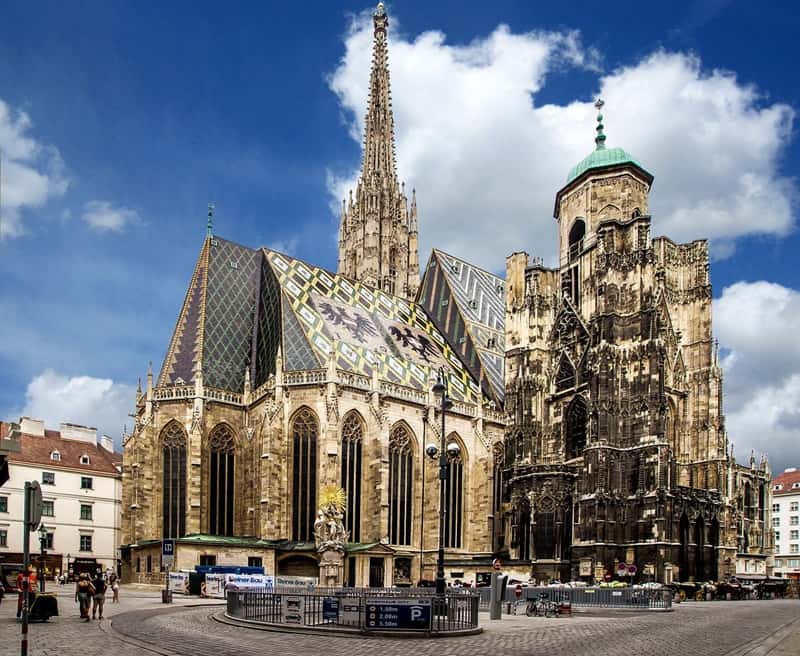
Great Barrier Reef
The Great Barrier Reef is the world’s most extensive coral reef system, located off the coast of Australia. It is home to a vast array of marine life, including over 1,500 species of fish, 30 species of whales and dolphins, and six sea turtles. The Great Barrier Reef is also home to over 400 types of coral. This makes it one of the most diverse ecosystems in the world. The Great Barrier Reef is a UNESCO World Heritage Site. And it is considered one of the Seven Natural Wonders of the World.

Mount Everest
Mount Everest is the highest mountain in the world, located in the Himalayas on the border between Nepal and Tibet. It stands at 29,029 feet tall and is considered one of the most challenging climbs in the world. Mount Everest is known for its stunning views, unique geology, and extreme weather conditions. It is also home to a diverse range of flora and fauna, including snow leopards, Himalayan black bears, and Tibetan wolves. Mount Everest is a UNESCO World Heritage Site and is considered one of the Seven Natural Wonders of the World.

Statue of Liberty
The Statue of Liberty is located in New York City. It is one of the most iconic landmarks in the United States. The statue was a gift from France and was dedicated in 1886. Visitors can ferry to Liberty Island and explore the statue and its history. The statue symbolizes freedom and democracy and is a must-see for anyone visiting New York City.

These three heritage sites are just a few examples of the incredible history and architecture that can be found worldwide. Each site offers visitors a unique experience and a chance to learn about the history of our world.
Galapagos Islands, Ecuador
The Galapagos Islands are a UNESCO World Heritage site. They are located in the Pacific Ocean, approximately 1,000 km from the coast of Ecuador. The archipelago consists of 13 major islands, six smaller islands, and numerous islets and rocks. The area is known for its unique biodiversity and is often called a “living museum and showcase of evolution.”

UNESCO recognized the Galapagos Islands as a World Heritage Site in 1978 and as a biosphere reserve in 1985. The marine reserve was added to the designation in 2001. However, in 2010, the Islands were removed from UNESCO’s list of endangered sites due to successful conservation efforts.
Despite this success, the Galapagos Islands still face threats from tourism, overfishing, and the introduction of invasive species. The islands receive around 100,000 visitors annually, and poorly regulated tourism can hurt the fragile ecosystem. Overfishing can also disrupt the food chain and harm marine life, while invasive species can outcompete native species and disrupt the balance of the ecosystem.
Efforts are being made to address these threats, including implementing stricter regulations on tourism and fishing, as well as conservation and restoration efforts to protect native species. The Galapagos Islands remain a unique and essential destination for those studying evolution and conservation.
Preservation and Conservation Efforts
UNESCO World Heritage Sites are not only famous for their cultural and natural significance but also for their efforts in preserving and conserving these sites for future generations. UNESCO’s work in preserving cultural heritage has been successful in many ways, including building identity and cohesion within communities.
Proper maintenance of these sites is crucial to their preservation, and UNESCO has established guidelines to ensure that they are maintained correctly. Sites that are not adequately maintained can end up on the “Danger List.” The upsurge in wilful destruction of heritage in recent years has demonstrated UNESCO’s enduring relevance in leading international efforts to prevent the pillage and illicit trafficking of cultural property.
In addition to cultural preservation, UNESCO World Heritage Sites are essential for biodiversity conservation. Up to 33% of the last remaining elephants, tigers, and pandas, and 10% of the great apes, lions, and rhinos are found in these sites. However, World Heritage biodiversity is threatened by climate change and human pressures. UNESCO’s World Heritage Centre works to protect these sites and their biodiversity through various conservation efforts.
Overall, UNESCO’s efforts in preserving and conserving World Heritage Sites have successfully maintained these sites’ cultural and natural significance. Through their work, UNESCO ensures these sites remain accessible to future generations.
Tourism and World Heritage Sites
UNESCO World Heritage Sites are some of the most popular tourist destinations in the world. They attract millions of visitors every year, generating significant revenue for the local economies. The famous UNESCO World Heritage sites attract even more tourism than the lesser-known ones. However, with the increase in tourism, there is also a risk of damage to the sites.
To address this issue, UNESCO has developed guidelines for sustainable tourism at World Heritage Sites. These guidelines aim to balance the economic benefits of tourism with the need to preserve the cultural and natural heritage of the sites.
One of the fundamental principles of sustainable tourism is the involvement of local communities. By involving local communities in the management and promotion of the sites, UNESCO aims to ensure that the economic benefits of tourism are shared more equitably and that the sites are protected for future generations.
Another critical aspect of sustainable tourism is the promotion of responsible travel. This includes respecting local cultures and traditions, minimizing the environmental impact of tourism, and supporting local businesses.
To help visitors plan their trips, UNESCO provides information on its website about each World Heritage Site, including details on how to get there, what to see and do, and where to stay. Visitors can also find information on local tour operators and other travel-related services.
Overall, sustainable tourism is essential for the continued preservation of World Heritage Sites. By following the guidelines set out by UNESCO, visitors can help to ensure that these sites are protected for future generations to enjoy.
Future Challenges for UNESCO World Heritage Sites
As the number of UNESCO World Heritage Sites continues to grow, so do the challenges these sites face. In today’s world, these sites are vulnerable to uncontrolled urban development, unsustainable tourism practices, neglect, natural calamities, pollution, political instability, and conflict.
One of the biggest challenges faced by UNESCO World Heritage Sites is the impact of climate change. Rising sea levels, extreme weather events, and other climate-related phenomena pose a significant threat to the long-term survival of these sites. In response, UNESCO has launched several initiatives to help protect these sites from the effects of climate change.
Another challenge faced by UNESCO World Heritage Sites is the impact of tourism. While tourism can bring economic benefits to these sites, it can also cause damage to the environment and cultural heritage. To address this issue, UNESCO has developed guidelines for sustainable tourism at World Heritage Sites.
In addition to these challenges, UNESCO World Heritage Sites also face the threat of illegal trade in cultural artifacts. This trade can lead to the loss of important cultural heritage and damage to the integrity of these sites. UNESCO is working with governments and other organizations to combat this illegal trade and protect the cultural heritage of these sites.
Despite these challenges, UNESCO World Heritage Sites inspire and awe visitors worldwide. Through continued efforts to protect these sites, we can ensure that future generations will be able to experience and appreciate the rich cultural and natural heritage of our world.
Frequently Asked Questions
What are the top 10 UNESCO World Heritage sites in Europe?
Europe is home to many UNESCO World Heritage sites, and choosing only ten can be challenging. However, some of the most famous ones include the Historic Centre of Rome, the Acropolis in Athens, the Tower of London, the Palace of Versailles, the Historic Centre of Vienna, the Alhambra, the Historic Centre of Prague, the Mont-Saint-Michel, the Palace of Westminster, and the Historic Centre of Florence.
Which countries have the most UNESCO World Heritage sites?
Italy has the most UNESCO World Heritage sites, totaling 58. China comes in second with 56, followed by Spain with 48, Germany with 46, and France with 45.
What is the most visited UNESCO World Heritage site?
The most visited UNESCO World Heritage site is the Great Wall of China, with an estimated 10 million visitors per year. Other popular sites include the Taj Mahal in India, Machu Picchu in Peru, and the Colosseum in Rome.
What is the significance of UNESCO World Heritage sites?
UNESCO World Heritage sites are considered to have outstanding universal value and are recognized as important cultural or natural sites that should be preserved for future generations. These sites are chosen based on their historical, cultural, or biological significance and are protected by international treaties.
What are the top 5 natural UNESCO World Heritage sites?
The top 5 natural UNESCO World Heritage sites include the Great Barrier Reef in Australia, Yellowstone National Park in the United States, the Galapagos Islands in Ecuador, the Iguazu National Park in Argentina and Brazil, and the Serengeti National Park in Tanzania.
How many UNESCO World Heritage sites are there?
As of 2023, there are 1,154 UNESCO World Heritage sites located in 167 countries around the world. These sites include 845 cultural, 209 natural, and 38 mixed properties.
Closing Thoughts
Some people visit many of the famous UNESCO World Heritage sites. For some, it’s a hobby to visit as many as they can.
Most people don’t understand the significance of famous UNESCO World Heritage sites even if they have visited them.
How many UNESCO World Heritage sites have you visited, and which is your favorite?
Looking for more inspiration? Start Here:
- Castle Howard – Yorkshires Brideshead Revisited
- Chatsworth House – England
- Harewood House – England
- Harrogate’s Victorian Turkish Baths
- Stonehenge – How To Visit For Free – With Maps!
- Temple Newsam – Leeds, England
- UNESCO World Heritage Sites – What Are They?
- Why Visit Lotherton Hall?
- York – The Heart Of The Viking Territory
We participate in the Amazon Services LLC Associates Program, an affiliate advertising program designed to provide a means for us to earn fees by linking to Amazon.com and affiliated sites.
Brit On The Move™ Travel Resources
Ready to book your next trip? Use these resources that work:
Was the flight canceled or delayed? Find out if you are eligible for compensation with AirHelp.
- Book your Hotel: Find the best prices; use Booking.com
- Find Apartment Rentals: You will find the best prices on apartment rentals with Booking.com’s Apartment Finder.
- Travel Insurance: Don’t leave home without it. View our suggestions to help you decide which travel insurance is for you: Travel Insurance Guide.
- Want to earn tons of points and make your next trip accessible? Check out our recommendations for Travel Credit Cards.
- Want To Take A Volunteer Vacation or a Working Holiday? Check out the complete guide to how here!
- Want to Shop For Travel Accessories? Check out our Travel Shop.
Need more help planning your trip? Visit our Resources Page, which highlights the great companies we use for traveling.